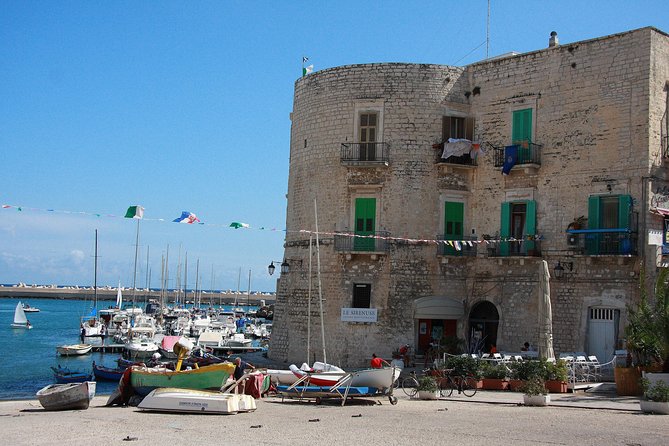Rome Trip Overview
Dotted with medieval hamlets and quiet hermitages, the Umbrian hills are enchanting. A few kilometres are enough to find yourself immersed in nature, with centuries-old beech woods, deep caves and mountains steeped in ancient legends.
Water emerges in springs and mountain lakes; it flows in rivers, carving out striking stone canyons; it gathers in swamps and artificial basins, transforming them into natural oases.
Additional Info
Duration: 10 hours
Starts: Rome, Italy
Trip Category: Day Trips & Excursions >> Day Trips
Explore Rome Promoted Experiences
What to Expect When Visiting Rome, Lazio, Italy
Dotted with medieval hamlets and quiet hermitages, the Umbrian hills are enchanting. A few kilometres are enough to find yourself immersed in nature, with centuries-old beech woods, deep caves and mountains steeped in ancient legends.
Water emerges in springs and mountain lakes; it flows in rivers, carving out striking stone canyons; it gathers in swamps and artificial basins, transforming them into natural oases.
Stop At: Le Fonti del Clitunno, Via Flaminia 7, 06042, Campello sul Clitunno Italy
The Clitunno river’s springs have created a lake with very clear and emerald green waters. This water garden inspired poets such as Propertius, Pliny, Virgilio, Byron and Carducci.
Groundwater comes to the suface as several water springs, a few of which can be found on the lakebed.
The water mirrors intense and changing colours, is rich in rare vegetal species (phanerogams, horsetail, moss, aquatic nasturtium…) that create a luxuriant appearance of rare beauty. Its shores are surrounded by a thick vegetation, particularly weeping willows and poplars.
Their rare beauty has inspired painters, poets and writers since ancient times.
Duration: 45 minutes
Stop At: Spoleto, Spoleto, Province of Perugia, Umbria
Located in southeastern Umbria, Spoleto is one of the region’s most fascinating art towns. Its wealth of history, varied cultural heritage and important arts events make it one of the tourist destinations most highly esteemed by visitors.
HISTORY
An important fortified Umbrian settlement, Spoleto became a Roman colony and later a municipium (90 BC). After the fall of the Roman empire, it was taken over first by Theodoric, king of the Visigoths, and then by the Byzantine Belisarius. Seized by Totila, it was rebuilt by the Byzantine general Narses. In the early Middle Ages, it became the capital of the Lombard Duchy of Spoleto. In 1155 Spoleto was conquered and destroyed by Frederick Barbarossa, and after a series of conflicts between the Guelfs and the Ghibellines it was conquered again by Cardinal Albornoz, who secured it for the papacy and made it an important town in the Papal States. Apart from the brief period under Napoleon, the papal rule continued unbroken until Spoleto joined the new Italian State.
ART, CULTURE, ENVIRONMENT
The historic center has maintained its medieval appearance, although traces of its Roman heritage are still visible.
Duration: 3 hours
Stop At: Cascata delle Marmore, Voc. Cascata, 30, 05100 Marmore, Terni Italy
The Marmore Falls: Among the highest in Europe, they were created by the Romans in 271 BC to drain the swamps around the Nera River: an engineering feat that has become one of the most spectacular natural attractions of Umbria.The vegetation along the entire course of water is luxuriant and flourishing, a mass of water that falls from a height of 165 metres: a breathtaking spectacle originated by nature’s spontaneity and human intelligence. PLEASE NOTE: Most of the time, the water in the canals above the falls is diverted to a hydroelectric power plant. Out of the season the waterfall is only flowing on certain times in the weekend. In summertime the waterfall is turned on for a few hours every day, with additional times on holidays.
Duration: 1 hour






